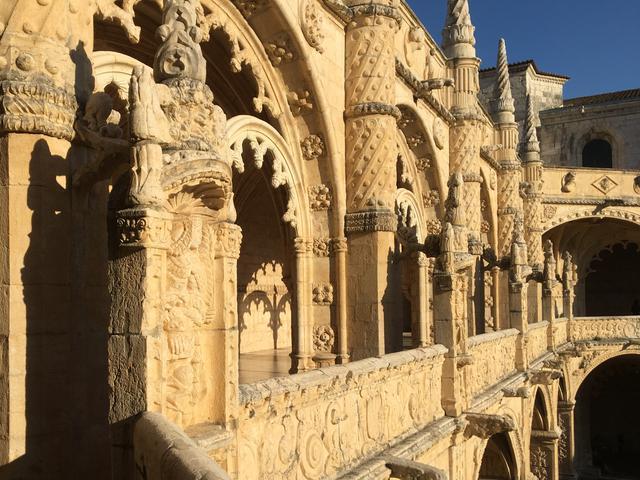Upstairs

Located on the second floor of the cloister, the "Upstairs" area is a true masterpiece of architectural innovation and artistic expression. The entire floor is constructed entirely in stone, showcasing the skilled craftsmanship of the builders during the time of its construction. The gallery on this floor, while sharing the same measurements as the ground floor, is characterized by a more understated elegance in its decorations. A straight balcony runs along all four sides of the gallery, offering visitors a stunning view of the surrounding terreiro.
One of the most striking features of the "Upstairs" area is the presence of 40 intricately carved drains, or gargoyles, adorning the base and top of the balcony. These drains are sculpted in the form of various animal figures, each serving the practical purpose of channeling rainwater away from the building. Surrounding the porch, visitors will find a series of niches containing sculptures representing virtues such as Faith, Charity, Prudence, and Strength. Additionally, the figure of King Manuel I, wearing a distinctive hat and pointing upwards, is believed to be depicted among these sculptures.
At the pinnacle of the "Upstairs" area, visitors will encounter a stunning Renaissance platiband adorned with busts of Roman emperors. This exquisite piece of classicist decoration was crafted by the talented artist Diogo de Torralva between 1540 and 1551, showcasing the influence of Renaissance aesthetics on Portuguese art and architecture. As visitors continue through the gallery, they will come across the entrance to the former bookstore room, which was commissioned in 1640 and later dismantled in the 19th century. Despite the loss of approximately 8,000 volumes during the dismantling, a small collection of books from the bookstore can still be found in the National Library and Archives.
On the opposite side of the "Upstairs" area, a closed-off space once housed shelters where kings and nobles would stay during their travels through Lisbon. These cells provided temporary accommodation for travelers on pilgrimage or royal journeys, offering a glimpse into the historical significance of the monastery as a hub of hospitality and cultural exchange. The "Upstairs" area stands as a testament to the rich artistic heritage and architectural ingenuity of the Portuguese Renaissance, inviting visitors to explore its intricate details and timeless beauty.
© ChatGPT 3.5